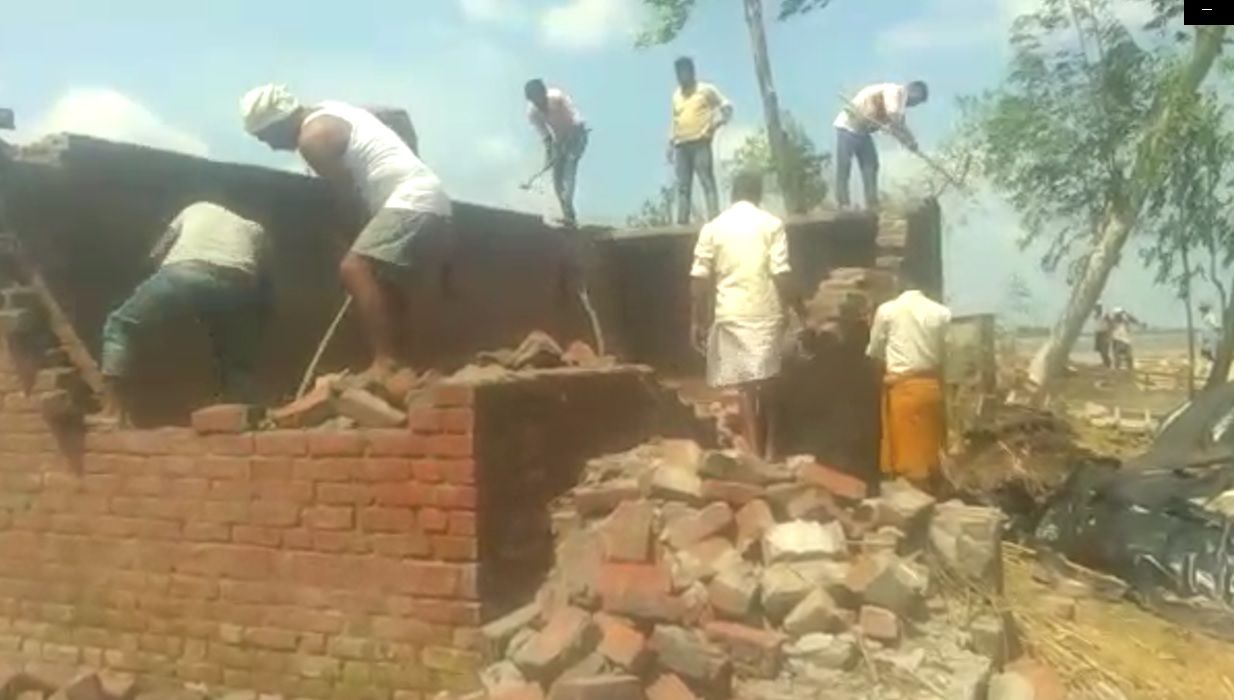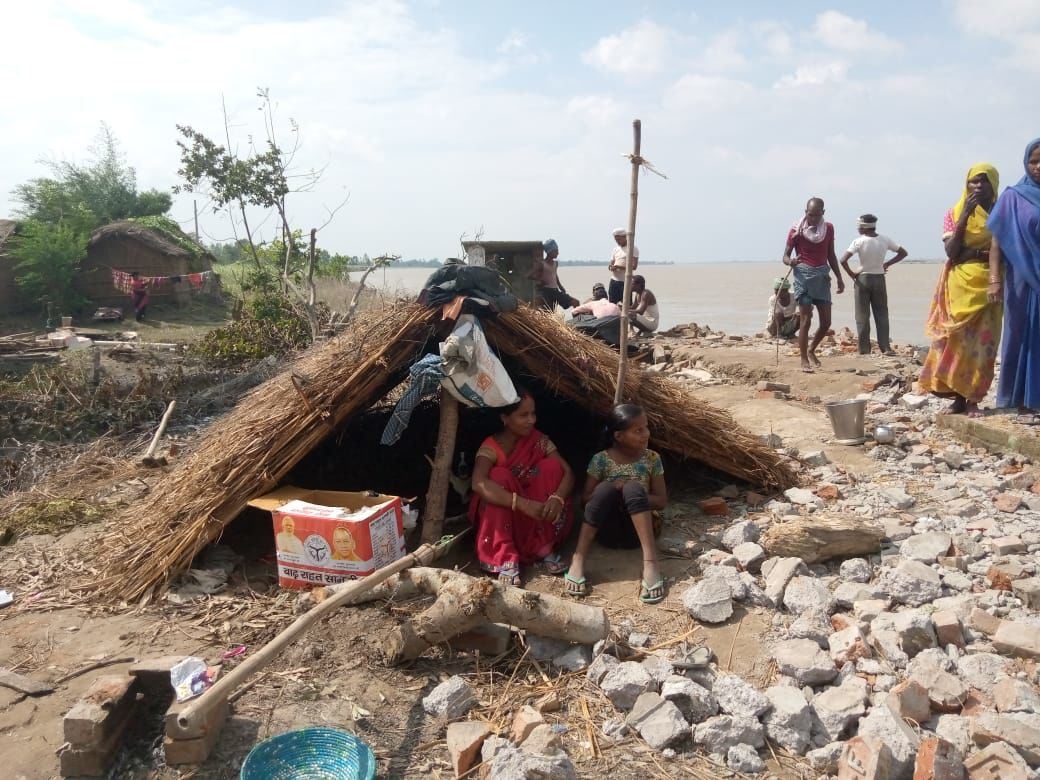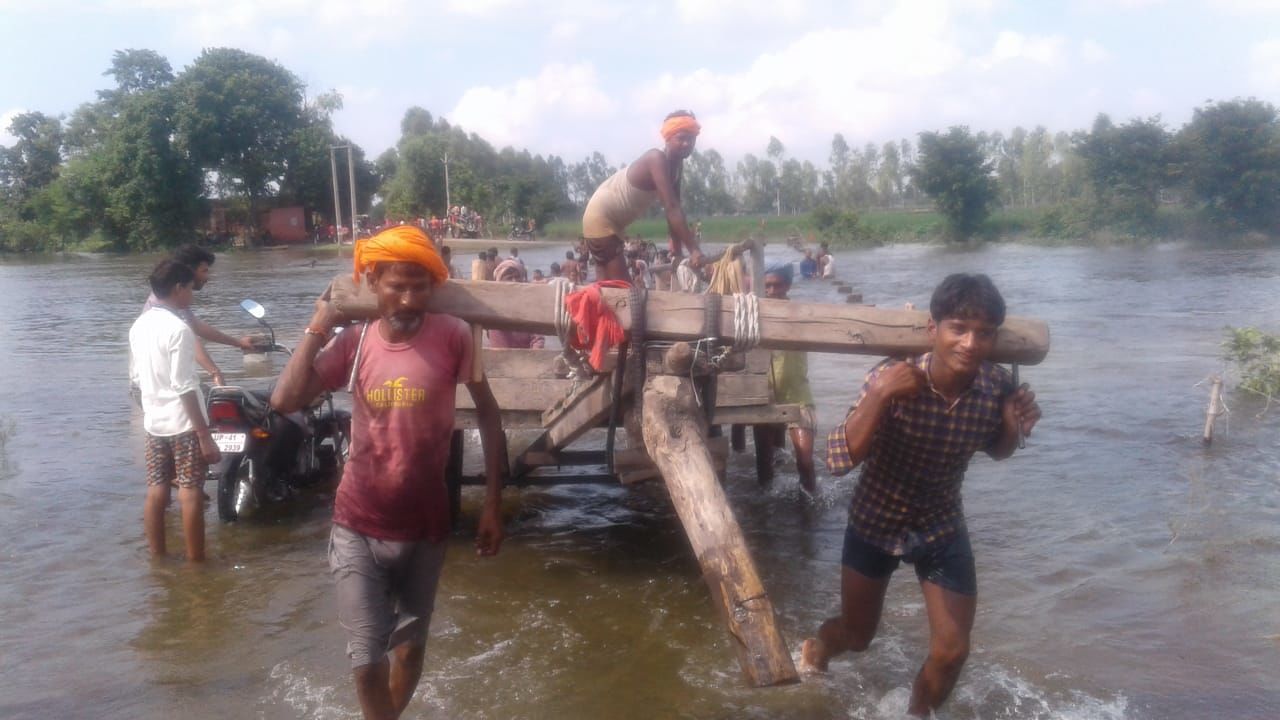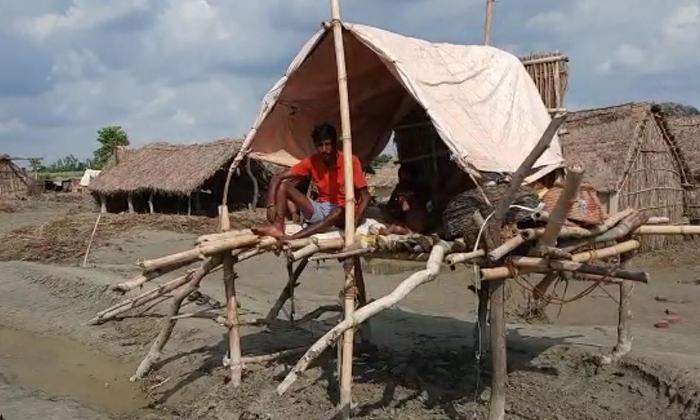While the floods have abated in Uttar Pradesh, flood waters continue to wreak havoc in hundreds of villages
About 900 villages in Uttar Pradesh are water-logged. In the last three months, standing crops have been destroyed, leaving farmers struggling for a fistful of grain to keep hunger at bay.

Mohit Shukla and Virendra Singh
Years ago, Siyaram worked hard and built his family a home on the banks of the Saryu river. He hoped it would be a safe haven for him in his old age. However now, at the age of seventy, Siyaram is preparing to demolish that home in Tilwari village of Sirauligauspur tehsil in Barabanki district adjoining Lucknow, the capital of Uttar Pradesh.
“The Saryu river (locally called Ghaghra) was in full spate this monsoon, and has swept away so many villages in its path. My home is close to the banks and is in danger of being washed away anytime now. I am taking down my own house so that I can at least salvage its bricks,” Siyaram told Gaon Connection.
Tilwari presents a grim picture of flood-fury in Uttar Pradesh. In the past three months, thousands of villagers have helplessly watched as roads disappeared, crops rotted, and their homes were inundated by the rising flood waters. As the banks of the river are breaching rapidly, many houses are already underwater. Fearing it will be their turn next, many villagers like Siyaram are demolishing their homes so that they can reuse the brick and mortar to build shelters elsewhere.

Trapped, wet and miserable
As per the official records, people in nearly 893 villages of the 17 districts in Uttar Pradesh have been severely affected. These districts include Ambedkarnagar, Ayodhya, Azamgarh, Bahraich, Balliya, Barabanki, Basti, Devariya, Farrukhabad, Gonda, Gorakhpur, Kasganj, Lakhimpur Khiri, Kushinagar, Mau, Shahjahanpur and Sitapur. Though fury of the waters has abated, the woes of the inhabitants continue.
In Barabanki district’s 88 villages, seven people have lost their lives and 60,785 people and 16,300 cattle are in grief across the tehsils of Ramnagar, Ramsanehighat and Sirauligauspur. Three villages are marooned, Tilwari being one of them. “We are trapped and have reported the matter to the authorities but so far no government help has reached us,” Mamata Singh from the village told Gaon Connection.
Tilwari farmer Akbal Singh has also stood by helplessly watching his dreams being swept away. His daughter was to have got married this year, but that is not going to happen as his crop is damaged beyond repair. “Everything that we owned is lost. My entire sugarcane crop is destroyed. Not since 2014 have floods caused so much havoc,” he said. After their crops, the river will snatch away their homes, feared Akbal Singh.

Bridges under troubled waters
In Fatehpur tehsil of Barabanki, in Bindura, the Gudian Purwa Bridge was completely submerged making it dangerous for villagers who wanted to go over to Lucknow. They were forced to take detours of 30 to 40 kilometres. Similarly, the Behara Bridge, connecting Barabanki and Sitapur, was also under nearly three feet of water. Three young people drowned near this bridge. A few local samaritans used bullock carts to transport people and material across the submerged Behara Bridge. Others risked their lives crossing over in motorcycles and bicycles.
The waters have receded now, but the river is flowing on level with the bridge.

At Lakhimpur Khiri district, about 150 kms away from Barabanki, the surging Sharada river has flooded hundreds of acres of crops. In Dhaurahara block of Lakhimpur, 56 houses in Raini village alone have been washed away by the river. The nearly 1,000 inhabitants of Raini are either pulling down their homes or moving away.
Anjali Devi’s house in Raini was also submerged. She has received the ration kit from the government only once, she claimed, and whatever she had at home was damaged beyond repair.
“With no ration and no government help, we are forced to go hungry, sometimes for three days at a stretch. There is no one who cares if we fall sick. At least, we could have been provided with ration kits more frequently,” Devi remarked.

Running out of food and help
Although the Saryu river has dropped below the danger mark in Barabanki, thousands of villagers are still forced to live away from their homes. They are also at considerable risk of diseases. Many inhabitants of Raini have been shifted to safer places where the government has built shelters for them. “Our entire village was swept away by the floods. The floodwaters went over our thatched roofs. We only got a sack of potato once, how long could it have lasted us,” Raju, one of the shelter inmates, told Gaon Connection.
The Uttar Pradesh Chief Minister Yogi Adityanath conducted an aerial survey of the flood-affected Gonda district on 27 August. Meanwhile, he directed the authorities to extend all possible help to the flood victims and ordered special monitoring and vigilance of sensitive places until 15 September.
In the meanwhile, many villagers are left with nothing and are fending for themselves. The limited ration they received from the government has been used up and what food they had at home was long washed away. “My feet are rotting due to constant walking in the flood waters. There is no medical facility to speak of. Now my children are starving,” Kanhaiyalal, perched atop a machan with his four children and brother in Raini, told Gaon Connection.

A first hand report from Lakhimpur Khiri by Mohit Shukla and Virendra Singh from Barabanki.

